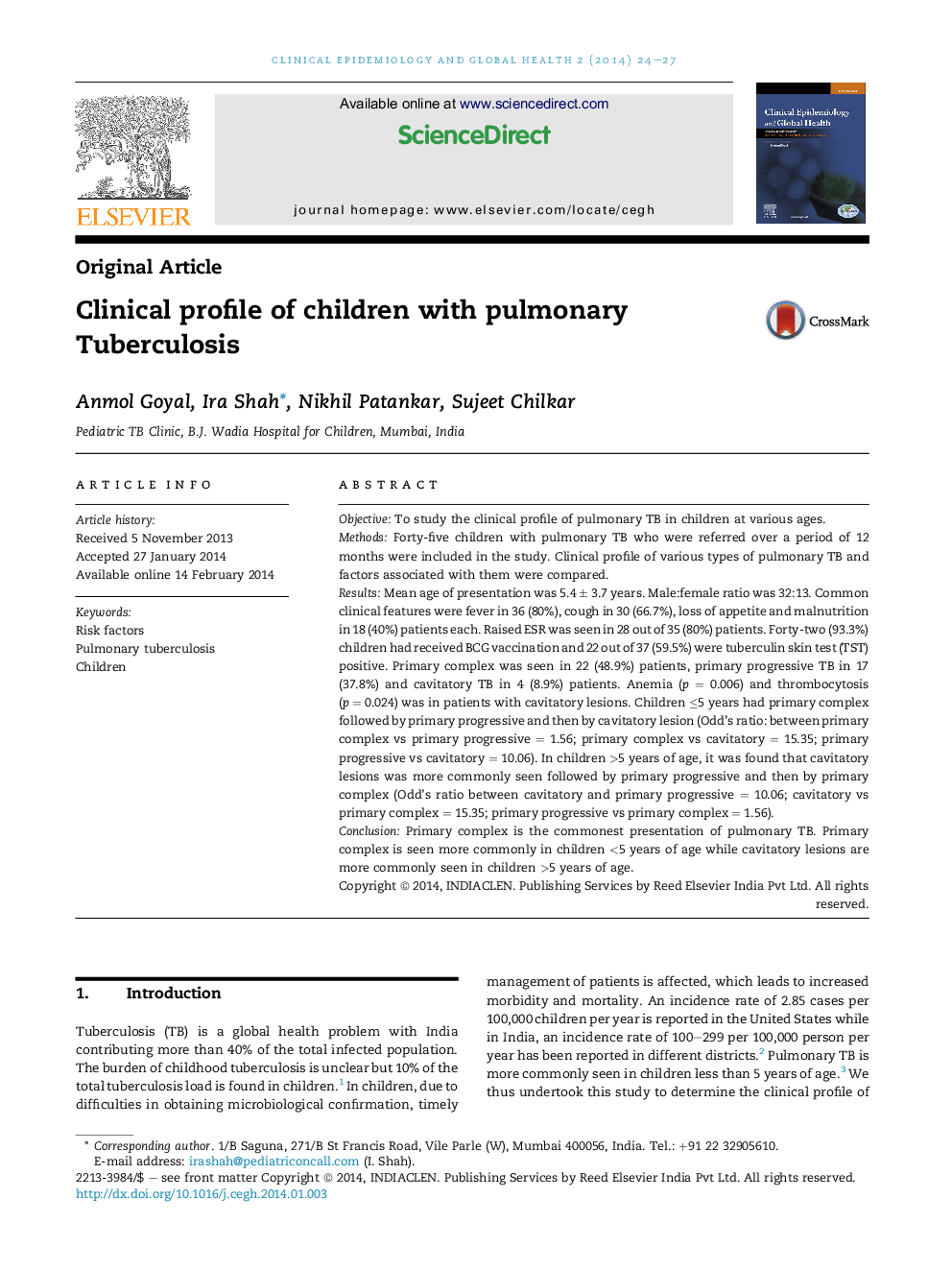| Article ID | Journal | Published Year | Pages | File Type |
|---|---|---|---|---|
| 3396365 | Clinical Epidemiology and Global Health | 2014 | 4 Pages |
ObjectiveTo study the clinical profile of pulmonary TB in children at various ages.MethodsForty-five children with pulmonary TB who were referred over a period of 12 months were included in the study. Clinical profile of various types of pulmonary TB and factors associated with them were compared.ResultsMean age of presentation was 5.4 ± 3.7 years. Male:female ratio was 32:13. Common clinical features were fever in 36 (80%), cough in 30 (66.7%), loss of appetite and malnutrition in 18 (40%) patients each. Raised ESR was seen in 28 out of 35 (80%) patients. Forty-two (93.3%) children had received BCG vaccination and 22 out of 37 (59.5%) were tuberculin skin test (TST) positive. Primary complex was seen in 22 (48.9%) patients, primary progressive TB in 17 (37.8%) and cavitatory TB in 4 (8.9%) patients. Anemia (p = 0.006) and thrombocytosis (p = 0.024) was in patients with cavitatory lesions. Children ≤5 years had primary complex followed by primary progressive and then by cavitatory lesion (Odd's ratio: between primary complex vs primary progressive = 1.56; primary complex vs cavitatory = 15.35; primary progressive vs cavitatory = 10.06). In children >5 years of age, it was found that cavitatory lesions was more commonly seen followed by primary progressive and then by primary complex (Odd's ratio between cavitatory and primary progressive = 10.06; cavitatory vs primary complex = 15.35; primary progressive vs primary complex = 1.56).ConclusionPrimary complex is the commonest presentation of pulmonary TB. Primary complex is seen more commonly in children <5 years of age while cavitatory lesions are more commonly seen in children >5 years of age.
